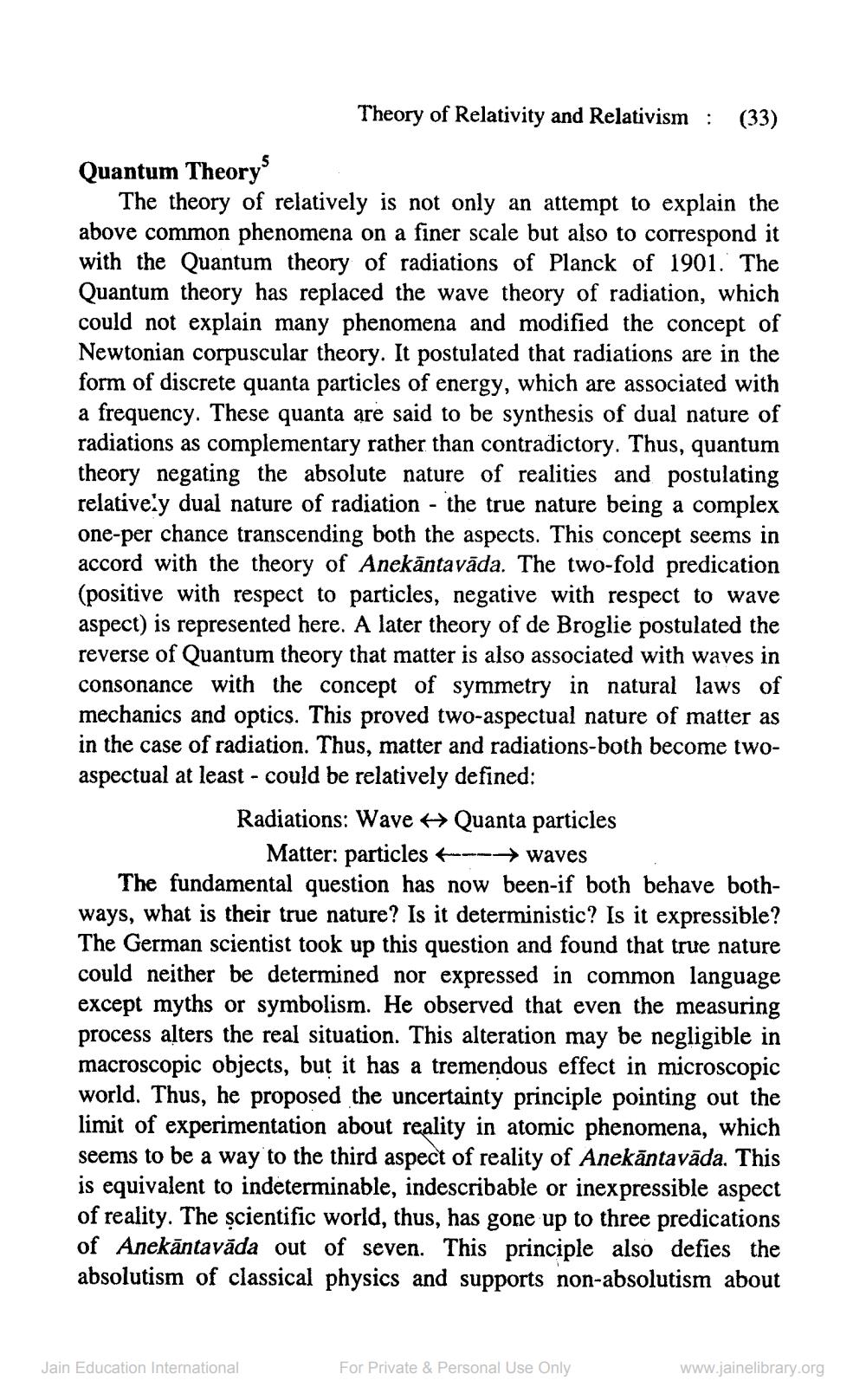________________
Theory of Relativity and Relativism : (33)
Quantum Theory
The theory of relatively is not only an attempt to explain the above common phenomena on a finer scale but also to correspond it with the Quantum theory of radiations of Planck of 1901. The Quantum theory has replaced the wave theory of radiation, which could not explain many phenomena and modified the concept of Newtonian corpuscular theory. It postulated that radiations are in the form of discrete quanta particles of energy, which are associated with a frequency. These quanta are said to be synthesis of dual nature of radiations as complementary rather than contradictory. Thus, quantum theory negating the absolute nature of realities and postulating relatively dual nature of radiation - the true nature being a complex one-per chance transcending both the aspects. This concept seems in accord with the theory of Anekāntavāda. The two-fold predication (positive with respect to particles, negative with respect to wave aspect) is represented here. A later theory of de Broglie postulated the reverse of Quantum theory that matter is also associated with waves in consonance with the concept of symmetry in natural laws of mechanics and optics. This proved two-aspectual nature of matter as in the case of radiation. Thus, matter and radiations-both become twoaspectual at least - could be relatively defined:
Radiations: Wave ↔ Quanta particles
Matter: particles
waves
The fundamental question has now been-if both behave bothways, what is their true nature? Is it deterministic? Is it expressible? The German scientist took up this question and found that true nature could neither be determined nor expressed in common language except myths or symbolism. He observed that even the measuring process alters the real situation. This alteration may be negligible in macroscopic objects, but it has a tremendous effect in microscopic world. Thus, he proposed the uncertainty principle pointing out the limit of experimentation about reality in atomic phenomena, which seems to be a way to the third aspect of reality of Anekāntavāda. This is equivalent to indeterminable, indescribable or inexpressible aspect of reality. The scientific world, thus, has gone up to three predications of Anekāntavāda out of seven. This principle also defies the absolutism of classical physics and supports non-absolutism about
Jain Education International
For Private & Personal Use Only
www.jainelibrary.org




